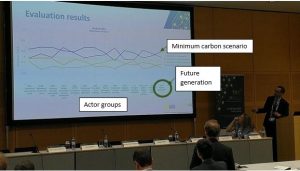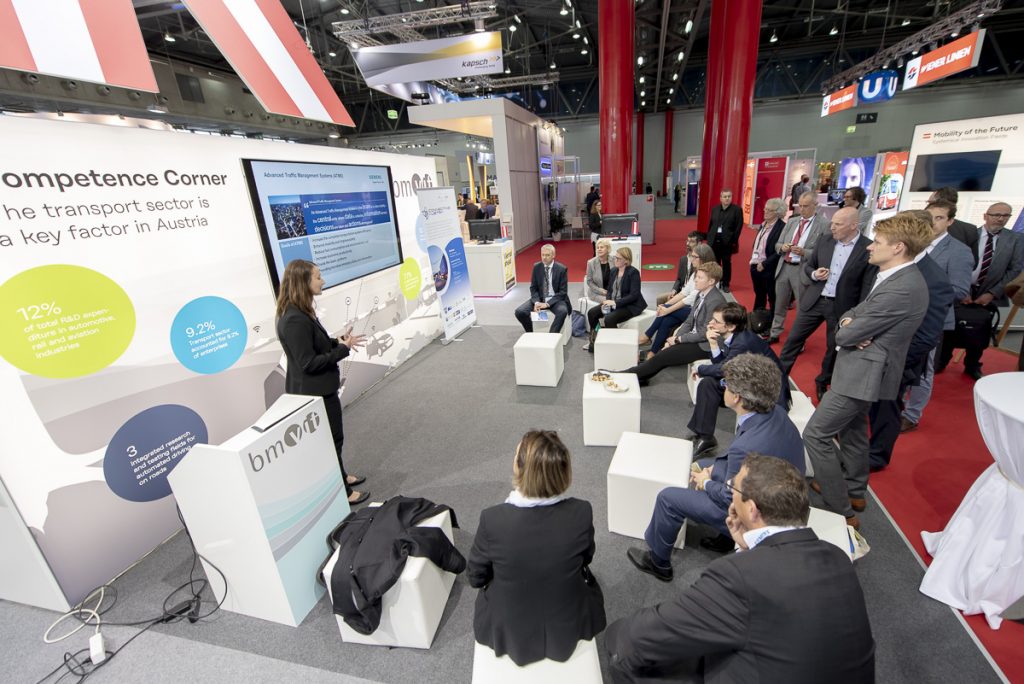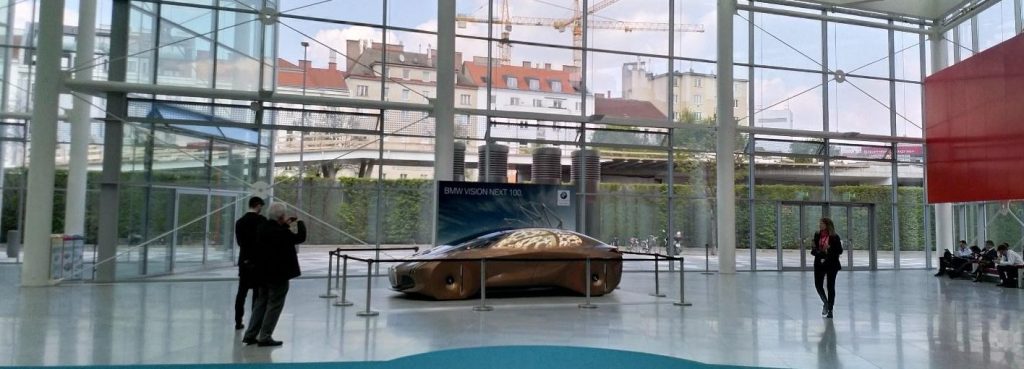The TRA conference (Transport Research Arena) is Europe’s largest transport research conference. Like its TRB counterpart in the US (Transportation Research Board), it is an annual event that researchers and practitioners earmark in the calendar to share the latest developments and keep up-to-date with upcoming challenges in the field. In practice, attending the TRA is like a marathon: with common keynotes by ministries and industries, roundtable discussions, 9 parallel tracks of sessions, a large foyer for poster presentations, and a special area for industry innovations, all taking place over four days.
This year the focus was on two main trends of transport: digitalisation and decarbonisation. At first glance, the future of electromobility and particularly self-driving cars were at the centre of discussions, with scientific sessions covering the topic from detailed discussions from ICT interoperability, to modelling challenges and regulatory implications. Yet, several sessions explored the wider developments for sustainable transport as a whole, including life-cycle assessments to analyse environmental impacts, new urban mobility solutions and services, and the human dimension in transport.
 One highlight about the future vision of mobility was the session by MoTiV Advisory Board Member Imre Keseru, who presented (we believe for the first time) methods for explicitly including future generations as a stakeholder in transport evaluation using Multi-Actor Multi-Criteria Analysis.
One highlight about the future vision of mobility was the session by MoTiV Advisory Board Member Imre Keseru, who presented (we believe for the first time) methods for explicitly including future generations as a stakeholder in transport evaluation using Multi-Actor Multi-Criteria Analysis.
Other session topics relevant for the ERAdiate and/or MoTiV projects were for example “The Urban Mobility Labs Approach in Austria” by AustriaTech, “Understanding Access Mobility to Railway Stations” by Cerema, and a particularly thought-provoking session by Prof. Hermann Knoflacher, head of the Institute for Transport Planning and Technology at TU Wien, on “Digital mobility – where is the human?”. Poster highlights included new research on topics such as “Self-driving vehicles as a complement to public transport”, “Modelling cyclists traffic volume with smartphone-based data”, “Supporting multimodal travelling through mobility apps” and “Decoupling economic growth and car use”.
In our discussions, we found stakeholders to be increasingly aware of how digital technologies can be effective in supporting policies, business and everyday solutions for smart and sustainable mobility. The focus has gradually shifted from technologies to solutions addressing specific needs of citizens and communities. Despite the emphasis on autonomous vehicles, they are still perceived as “not yet ready for deployment” and with “an unclear and somehow unpredictable development trajectory”. This insight is reflected, for instance, in the Smart City Wien framework strategy, which does not mention autonomous vehicles as a key factor of being smart or sustainable. Instead, the objectives of this strategy are formulated in terms of “consuming less resources and protecting the climate” and “improving quality of life through innovations”, just to name a few.
Another growingly hot topic this year (both at TRA and TRB) is the realisation that transport is still very much dominated by men, in planning, in industry, and in research – and this has important implications for planning transport sustainably. Women experience transport differently, and traditionally not enough focus has been given to meeting their needs, which embeds gender inequality in everything from the type of preferred solutions to future visions of mobility. To illustrate this point anecdotally, we could not help but notice how the car industry conveniently planted its own vision of the future transport right in the lobby of TRA2018. Yet the vast majority of those stopping to take pictures were … men.
In 2018, widening visions of sustainable mobility is still a work in progress.


